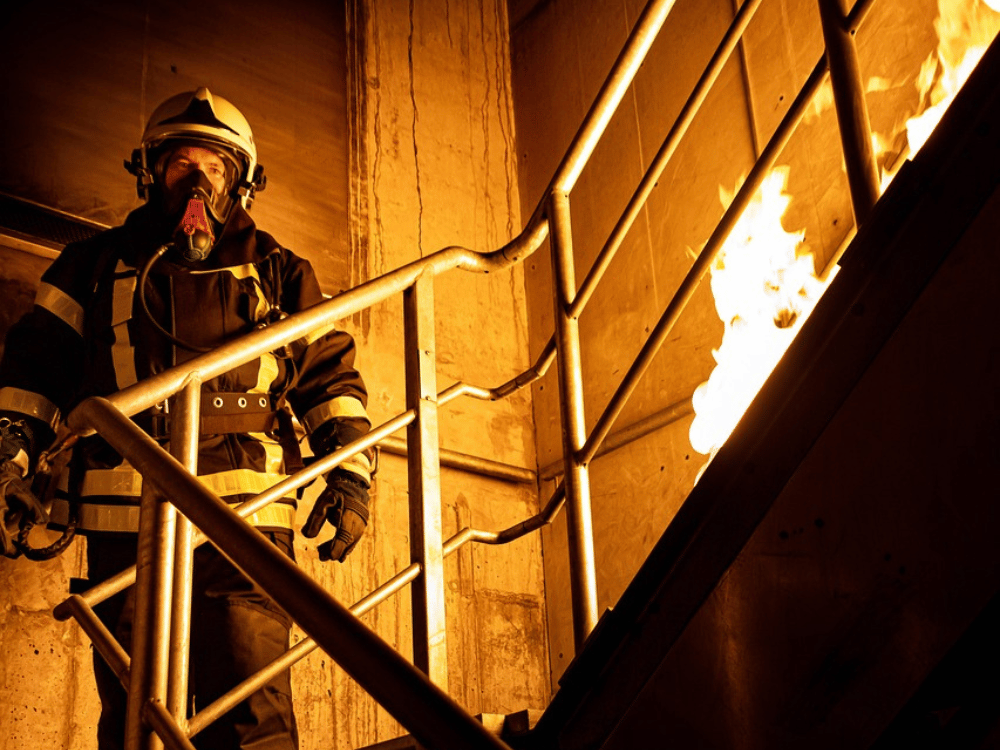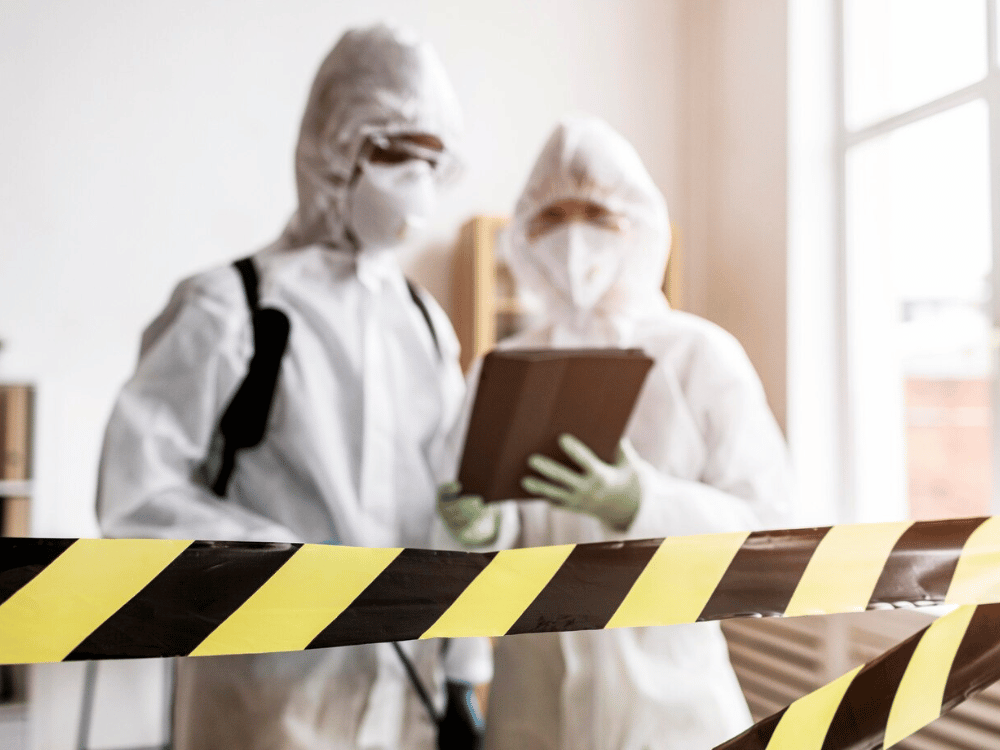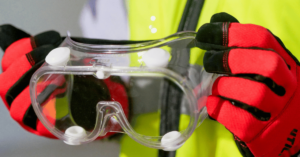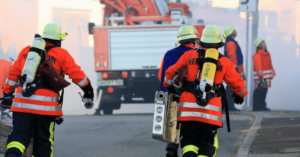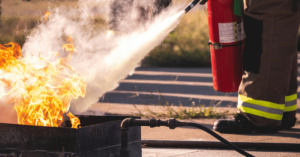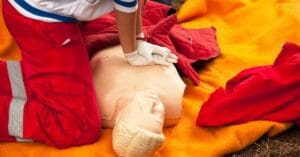Government statistics show that the Fire & Rescue Service attended 143,625 workplace fires in 2023.
While this does represent a 23% decrease from the previous year, we still believe this is too high.
However, giving business owners a better understanding of DSEAR regulations and access to industry-leading health and safety training could help drive down this figure.
Let’s start by defining what exactly DSEAR is before outlining the benefits of getting a deeper understanding of suitable training.
What Does DSEAR Stand For?
DSEAR is an acronym for the Dangerous Substances and Explosive Atmospheres Regulations 2002.
The DSEAR regulations place a responsibility on employers and the self-employed to protect people on their premises from the risks of fire, corrosion, and explosions.
But what, specifically, do the regulations cover?
What are Dangerous Substances?
The Health and Safety Executive (HSE) outlines that dangerous substances covered under DSEAR regulations are:
“Any substances used or present at work that could, if not properly controlled, cause harm to people as a result of a fire or explosion or corrosion of metal.”
Examples of these dangerous substances can include:
- Flammable gases
- Paints
- Solvents
- Varnishes
The highlighting of those substances is a distinguishing factor of DSEAR regulations against other similar legislation, such as COSHH.
DSEAR covers ‘dangerous substances’ whereas COSHH laws outline the safe management of ‘harmful substances’ that can be inhaled or come into contact with the eyes or skin, such as dust, gases, fumes, liquids, gels, or powders.
In addition, COSHH laws do not apply to another hazardous substance – asbestos. This is chiefly because asbestos is classified as dangerous enough to warrant its own laws – the Control of Asbestos Regulations 2012 (CAR).
What are DSEAR Regulations 2015?
Although the DSEAR regulation was implemented in 2002, the laws were updated in 2015.
The alteration, which came into effect in June 2015, brought in new measures to cover substances that are corrosive to metals and gases under pressure.
The new laws place a responsibility on employers to complete risk assessments on such substances and implement suitable control or management processes.
What is an Explosive Atmosphere?
Explosive atmospheres can be caused by flammable gases, mists, vapours, or combustible dust.
Examples could be vehicle paint sprays, while powders like sugar, flour, grain, and wood could be defined as combustible dust.
DSEAR analysis shows that the regulations define an explosive atmosphere as a mixture of such substances in the air, and after an ignition source is introduced, fire spreads to the entire unburned mixture.
Diving deeper, the regulations highlight that these gases, mists, and vapours would combust when mixed with the air and ignition in atmospheric conditions.
The HSE describes atmospheric conditions as:
“Temperatures of –20°C to 40°C and pressures of 0.8 to 1.1 bar”
What is a DSEAR Certification?
DSEAR certification highlights that you can demonstrate what dangerous substances and explosive atmospheres are. Employers understand how to keep staff safe in these environments, and employees know their safety responsibilities.
Getting your team DSEAR certified is as simple as completing our health and safety training courses.
Benefits of a DSEAR Training Course
The benefits of a DSEAR training course are far-ranging for employers, Line Managers, and employees.
- Ensure workplace safety: There were 284 fire-related workplace fatalities in 2023. That represents an increase in deaths for the third year in a row. Statistics like this prove how essential workplace fire safety processes are – this extends to DSEAR knowledge.
- Reputation maintenance: Understanding how to manage dangerous substances and explosive atmospheres in the workplace is essential for preventing fires from forcing a business to close. Business closures are, of course, costly. However, they can also damage your company’s reputation as customers find new suppliers.
- Reducing financial losses: As of March 2020, the estimated total economic and social cost of fires to UK businesses was £12 billion. Meanwhile, the average cost per fire attended is £78,000. By taking DSEAR training, employers and managers can mitigate the risks of expensive and deadly fires occurring in the workplace.
- Increasing productivity: Through DSEAR qualification, businesses can help foster a strong workplace safety culture while upholding a safe working environment for all. When employees feel that their safety is taken seriously, their happiness at work increases. A study by the University of Warwick found that happy employees are 12% more productive.
- Enhanced employee mood and loyalty: As we just mentioned, happy employees are more productive, and one proven way to inspire happiness in your team is to drive professional development. A recent survey by Ciphr found that around 31% of employees said they have or would leave a job if a business stopped its Learning & Development opportunities.
- Make recruitment simpler: By way of comparison, those Ciphr numbers also showed that 28% of people wouldn’t apply for a position if the employer didn’t invest in training.
List of DSEAR Requirements
To ensure compliance with DSEAR regulation, businesses should focus on six core legislative requirements:
1. Identify Dangerous Substances
As we mentioned earlier, the first stage to becoming DSEAR compliant is to have a strong knowledge of dangerous substances and explosive atmospheres.
2. Risk Assessment
When you know what you are searching for, you can turn your attention to completing a complete site check. Like a fire risk assessment, DSEAR risk assessments help identify and examine the dangerous substances in your workplace. It should then focus on the activities occurring in that area and define how likely a fire could occur in the area. Findings of the risk assessments should then be recorded.
3. Control Measures
Where the substitution of dangerous substances is not practicable, control measures should be implemented.
These should include reducing such substances to a minimum, managing the release of substances, preventing all dangerous atmospheres (where possible), avoiding ignition sources, and keeping reactive substances apart.
4. Mitigation
DSEAR mitigation measures should be specific to the premises, zone, and work being carried out. These could include:
- Reducing the number of employees at risk
- Providing materials that are explosion and corrosion-resistant
- Providing explosion suppression or relief equipment
- Taking measures to minimise fire spread
- Providing relevant and robust training to employees.
5. Training
Appropriate health and safety training can show your team how to identify dangerous substances and provide crucial guidance around best practices or ACOP (Approved Code of Practice).
6. Zoning and Ignition Sources
DSEAR defines zones as: “any place in which an explosive atmosphere may occur in quantities such as to require special precautions to protect the safety of workers.” It’s important to understand ACOP to keep DSEAR zones and ignition sources apart.
7. Emergency Procedures
Safety procedures are nothing with emergency preparedness. A robust fire strategy plan can help set out your preparedness from the moment you enter the building.
Aside from endangering employees, non-compliance with DSEAR regulations can also carry heavy punitive actions.
For example, in 2015, a Wales-based industrial seating manufacturer was fined £52,000 when a worker was burned by a highly flammable mould release agent.
How to Adhere to the DSEAR Regulations
To avoid similar terrible situations and fines, as outlined above, businesses should stay current with the latest DSEAR regulations.
Staying compliant includes actioning the measures we highlighted earlier, including:
- Completing regular risk assessments
- Implementing control measures
- Mitigating risks through safe working practices, providing health and safety training, and using explosion and corrosion-resistant materials
- Preparing emergency processes
Frequently Asked Questions (FAQs)
Here are some frequently asked questions on DSEAR regulations:
Is DSEAR a Legal Requirement?
Yes. The Dangerous Substances and Explosive Atmospheres Regulations 2002 is a piece of legislation that makes employers responsible for protecting people on their premises from the risks of fire, corrosion and explosions.
Non-compliance with DSEAR regulations can result in fines, criminal charges, or even penal sentences being handed down.
What Was The Major Highlight Of Dangerous Substances and Explosive Atmospheres Regulations 2002?
The major point to understand from DSEAR laws is that employers have a duty of care to protect workers and anyone else on their premises from risks of fire, explosion, and corrosion.
What is DSEAR ACOP?
DSEAR ACOP is an acronym for Dangerous Substances and Explosive Atmospheres Regulations 2002 Approved Code of Practice. More specifically, DSEAR ACOP details how employers can provide a safe working environment around dangerous substances and avoidance of explosive atmospheres.
What are HSE Fire Door Regulations?
The HSE enforces laws set out by the Regulatory Reform (Fire Safety) Order 2005, which outlines that the responsible person should check fire doors regularly. These reviews should be part of your standard fire safety checks to ensure doors are kept closed and in good condition to prevent fire from spreading.
Conclusion
DSEAR regulations are incredibly important in workplaces that regularly use dangerous substances.
Non-compliance with the legislation can have disastrous effects on your business, employees, finances, and industrial reputation.
Complete your DSEAR training online today and ensure your team is educated and completely compliant.
You can enrol them in TSW’s health and safety courses. Our impressive pass rate and expert tutelage will do the rest.

